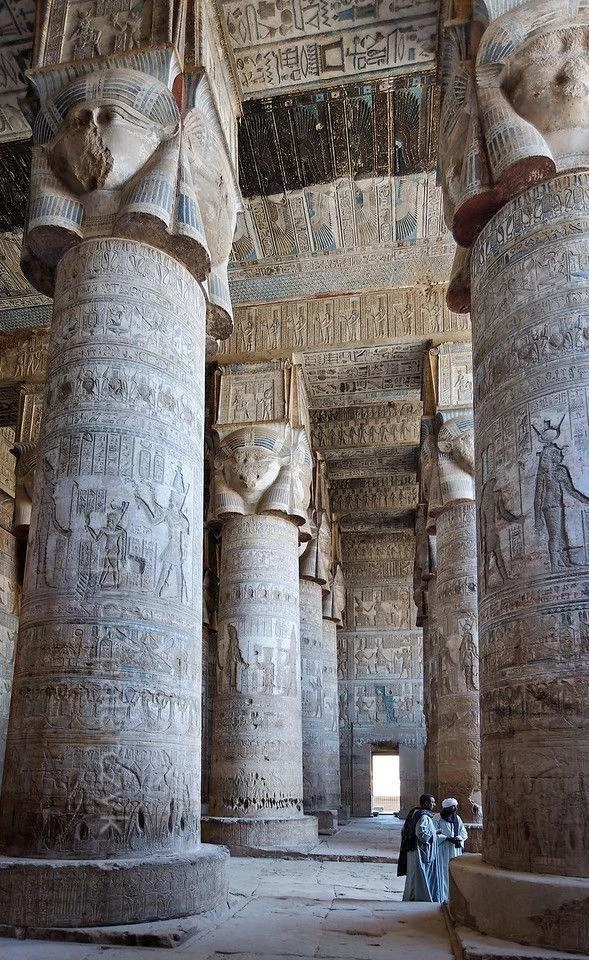Dandara and Abydos Temples

The complex of Dandara;
Is the home of the Temple of Hathor (The deity of love, music, & fertility) one of the most preserved temples in Egypt. The complex covers 40,000 sqm . Dendera Temple must have had a sanctuary, which was destroyed and rebuilt several times throughout Egypt ancient history; however, the present complex dates from the late Ptolemaic and Roman periods. The main highlight of the complex is the Temple of Hathor, the complex also includes a sacred lake, a sanatorium, a Mammisi was the ritual site of the birth of The God Hours, this is considered the latest preserved birth house, and despite being built during the Roman period it largely follows the traditional Ptolemaic model., and a Coptic Christian Basilica dated to the 5th century AD.
One of the most fascinating features of the temple is the Dendera Zodiac, an ancient map of the stars that was used to create and organize the Egyptian calendar. The temple also has beautiful astronomical engravings on its ceiling.
The Dendera Temple complex features a famous relief of Cleopatra VII and her son Caesarion, it portrays Cleopatra VII alongside her son, who is depicted as Pharaoh. Cleopatra intended for Caesarion to succeed her as ruler of the Ptolemaic Kingdom, but their defeat by Octavian and Caesarion's subsequent death prevented this to take place.
The Dendera Temple complex is renowned for its vibrant and well-preserved colors, especially on the ceilings and walls.
Carry on the journey to the north of Qena towards the city of Sohag when the beautiful temple of Kings Seti I is located. Around 100 KM to the north (2 hours’ drive).
The Abydos Temple complex;
Is one of the most significant archaeological sites in Egypt, known for its historical and religious importance. The main attraction at Abydos is The Temple of Seti I, also known as the Great Temple of Abydos. This temple was built around 1300 BC by Pharaoh Seti I and completed by his son, Ramses II.
The Temple of Seti I is renowned for its unique well-preserved reliefs and inscriptions, also known for its vibrant and well-preserved colors. The temple is dedicated to several gods, including Osiris, Isis, Horus, Amun-Ra, Ra-Horakhty, and Ptah. One of the most notable features of the temple is The Abydos King List, a chronological list of 76 kings of ancient Egypt, which is an invaluable resource for historians.
Another significant structure within the Abydos complex is The Osireion, a cenotaph built by Seti I. The Osireion is designed to symbolize the tomb of Osiris and features a mound surrounded by a moat, representing the primal mound that emerged from the waters of chaos at the dawn of creation.
Abydos has been a sacred site since predynastic times and continues to be a place of pilgrimage and historical interest throughout Egypt history.
One of the most notable features of the temple is The Abydos King List, a chronological list of 76 kings of ancient Egypt, which is an invaluable resource for historians.





